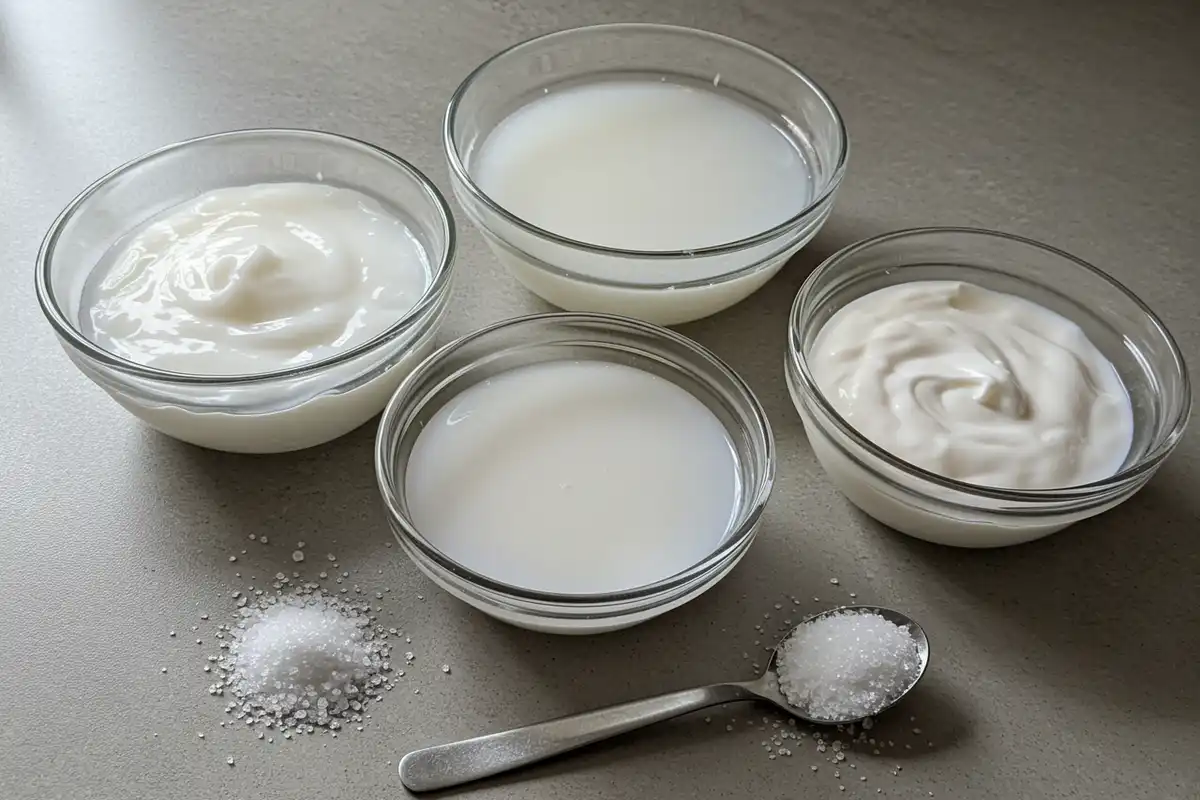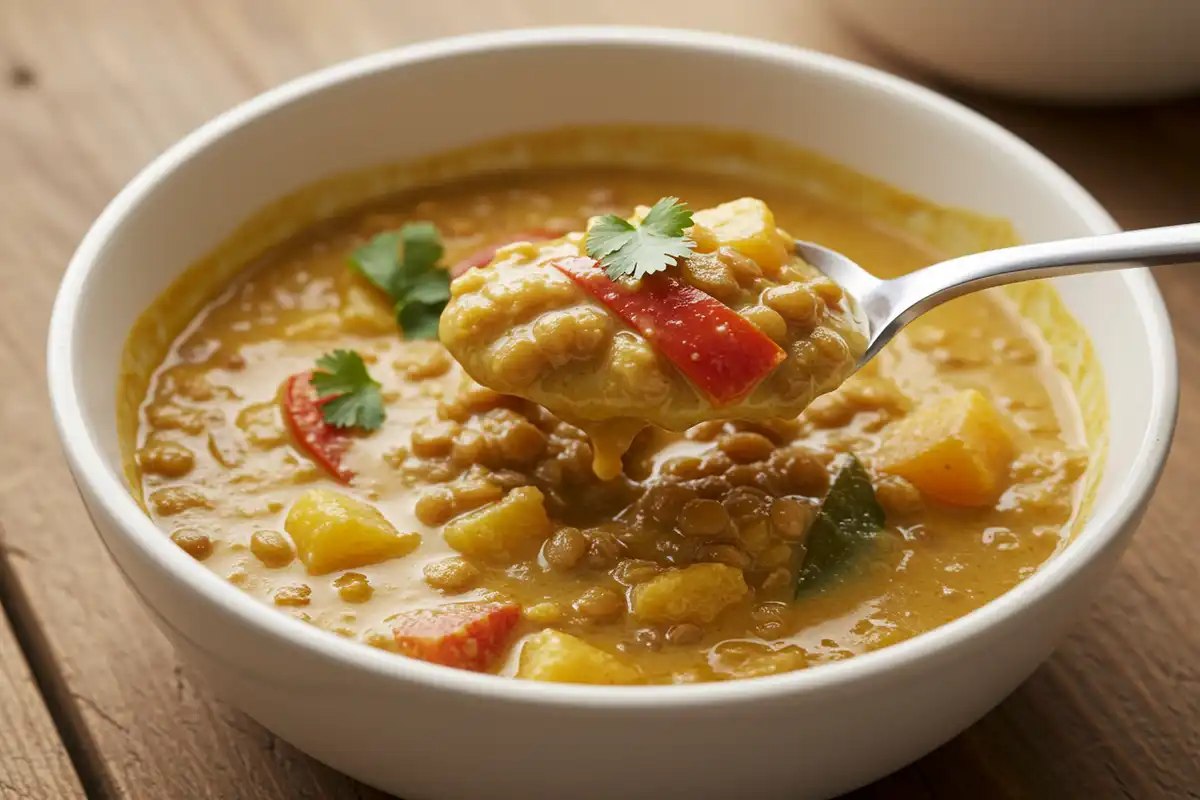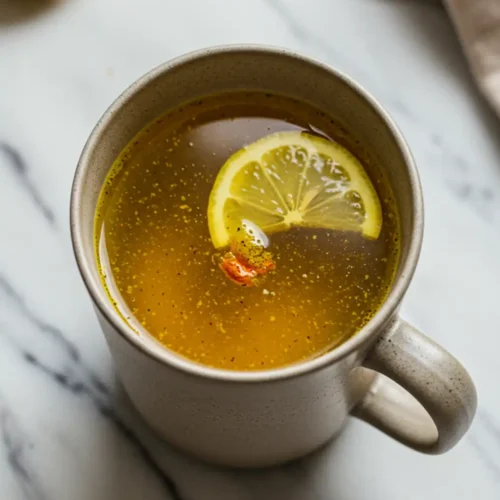Okay, amici! Let’s talk about one of my favorite kitchen helpers, the slow cooker, and a truly dreamy ingredient: coconut milk. Mamma mia, that creamy, tropical goodness adds such a luscious touch to so many dishes! But I hear you wondering, maybe even nervously whispering over your crock pot, “Is it okay to put coconut milk in a slow cooker?” Because we’ve all heard the horror stories, right? Curdled messes? Separated sauces? Don’t you worry!
The answer is a big, happy YES… with a few little tricks up our sleeve! Trust me, I learned this the hard way once when making a curry for Mike and the kids – let’s just say it wasn’t my prettiest creation! But now, I know the secret. We’re going to chat about the right way to use coconut milk in your slow cooker so you get that creamy, dreamy result every single time, without any heartbreak. Let’s unlock the secrets to slow-cooked coconut bliss!
Understanding Coconut Milk: Full-Fat vs. Light
First off, not all coconut milk is created equal, capisci? When you’re at the store, you’ll usually see a couple of main types:
- Full-Fat Coconut Milk: This is the good stuff, the real deal! It’s thick, rich, super creamy, and packed with that amazing coconut flavor. It comes from the first pressing of the coconut meat. This is usually my go-to for cooking!
- Light Coconut Milk: This is basically full-fat coconut milk that’s been watered down. Less fat, yes, but also less flavor and way less creamy. It can be a bit thin and sad in recipes, in my opinion.
- Cream of Coconut: Watch out for this one! It’s super sweet and thick, meant for piña coladas or desserts, NOT your savory curry! Nonna Rosa would definitely give you the side-eye if you used this in dinner!
For that luxurious texture and deep flavor we want in slow-cooked dishes, stick with the full-fat coconut milk whenever possible. Trust me on this!
Coconut milk brings such a lovely richness, and it’s got some interesting nutritional points too. If you’re curious about the health side of things, this article from Healthline breaks down its benefits pretty well.
The Key to Success: Adding Coconut Milk at the Right Time
Okay, here’s the golden rule, the secret handshake, the Nonna-approved wisdom for using coconut milk in your slow cooker: Timing is everything! The biggest boo-boo people make is adding it way too early.
Why? Because coconut milk doesn’t love being heated for hours and hours on end. That long, slow heat can make the proteins freak out and separate, leading to that dreaded curdled look. Not cute! So, the magic trick is to add it near the end of the cooking time, usually the last 30 to 60 minutes.
Here’s how I do it:
- Cook Your Base: Get everything else cooking in the slow cooker – your meat, veggies, broth, spices, whatever the recipe calls for.
- Let it Simmer Away: Let the slow cooker work its magic for most of the cooking time, getting everything tender and flavorful.
- The Grand Finale: About 30-60 minutes before serving, give that lovely can of full-fat coconut milk a good shake and stir it right into the pot.
- Gentle Heat: Just let it heat through gently with the rest of the dish. No need to crank up the heat or let it boil wildly.
- Serve & Enjoy: Bellissimo! You should have a perfectly creamy, non-curdled, delicious meal ready to go!
This trick works beautifully for things like curries. Adding the coconut milk late keeps the sauce smooth and luxurious. Speaking of curry, if you’re curious about the health aspects of that particular dish, I explored it in detail here: Is Japanese Curry Healthy or Unhealthy?.
When Adding Early Might Be Okay
Now, like all rules in the kitchen, there are sometimes exceptions! Some folks say that in recipes with lots of acid (like tomatoes or lemon juice), adding the coconut milk earlier might be okay because the acid helps stabilize it.
Honestly? I usually stick to adding it late. It’s the safest bet for avoiding curdling, especially when you’re starting out. Why risk it when the late-addition method works so well? Keep it simple, keep it creamy!
Troubleshooting: What to Do If Your Coconut Milk Curdles
Okay, let’s say disaster strikes (it happens to the best of us – I once turned a sauce into scrambled eggs, don’t ask!). You added the coconut milk, and it looks… well, funky. Separated. Curdled. Don’t panic! Take a deep breath, maybe pour a tiny glass of wine, and try these tricks:
- Whisk it Good: Sometimes it just needs a really vigorous whisking! Get in there and see if you can encourage it to come back together.
- Call in Reinforcements (Thickener): Make a little slurry (mix a teaspoon or two of cornstarch or tapioca starch with a tablespoon of cold water until smooth) and whisk it into the sauce. As it heats, it should help thicken and smooth things out.
- Immersion Blender Rescue: If it’s really separated, carefully use an immersion blender (stick blender) right in the pot to blitz it smooth again. Just do short pulses – you don’t want to make it gluey!
- Embrace Imperfection: Honestly? If it tastes good, who cares if it looks a little speckled? Sometimes curdled coconut milk doesn’t really affect the flavor much. Serve it over rice, add some fresh herbs, and call it rustic! Cooking is about love, not perfection!
Want more tips on handling dairy (and dairy-like) ingredients in cooking? This guide from Allrecipes has some helpful dos and don’ts about heating dairy products, and some principles apply here too.
What About Light Coconut Milk?: Proceed with Caution
So, you’re eyeing that can of light coconut milk, trying to save a few calories? You can use it in the slow cooker, but approach with caution, my friend! Because it has more water and less fat, it’s much more likely to curdle than its full-fat cousin.
If you must use light coconut milk, definitely, absolutely add it only in the last 30 minutes. And maybe have that cornstarch slurry ready just in case you need to rescue the texture. But for the best flavor and creamiest result? Full-fat is the way to go!
Recipes That Shine with Coconut Milk in a Slow Cooker
Alright, now that you’re a pro at using coconut milk in the slow cooker, what should you make? Mamma mia, the possibilities!
- Thai Curries (Green, Red, Panang): Slow cooker Thai curries are amazing! The coconut milk added at the end makes them perfectly creamy.
- Creamy Indian Curries (like Butter Chicken or Korma): While traditionally simmered, slow cooker versions can be great, adding the coconut milk (or cream/yogurt) late.
- Hearty Lentil Soups: A swirl of coconut milk at the end transforms a simple lentil soup into something rich and special.
- African Peanut Stew: That combo of sweet potato, peanut butter, and coconut milk in the slow cooker? Perfetto!
- Japanese Curry: Yes, you can even add coconut milk to my favorite Crock Pot Japanese Curry during the last 30 minutes for an extra creamy twist!
Addressing the FAQs: Your Slow Cooker and Coconut Milk Questions Answered
Let’s clear up any lingering questions you might have!
<!– wp:rank-math/faq-block {"questions":[{"id":"faq-question-1739744964093","title":"Is coconut milk ok in a slow cooker?“,”content”:”Yes, coconut milk is generally okay to use in a slow cooker, but it’s best to add it during the last 30-60 minutes of cooking to prevent curdling.”,”visible”:true},{“id”:”faq-question-1739744971945″,”title”:”Can coconut milk curdle while cooking?“,”content”:”Yes, coconut milk can curdle if it’s exposed to high heat for an extended period. Adding it near the end of the cooking process can help to prevent this.”,”visible”:true},{“id”:”faq-question-1739745049822″,”title”:”What cannot be cooked in a slow cooker?“,”content”:”Ingredients that are prone to becoming mushy, such as delicate vegetables (like spinach) or seafood, should be added during the last hour of cooking. Dairy products, like milk and cream, can also curdle if cooked for too long.”,”visible”:true},{“id”:”faq-question-1739745063378″,”title”:”How do you thicken curry in a slow cooker?“,”content”:”To thicken curry in a slow cooker, you can add a thickening agent, such as cornstarch, tapioca starch, or a slurry made from flour and water. You can also cook the curry uncovered for the last hour to allow some of the liquid to evaporate.”,”visible”:true}]} –>Is coconut milk ok in a slow cooker?
Can coconut milk curdle while cooking?
What cannot be cooked in a slow cooker?
How do you thicken curry in a slow cooker?
The Final Splash: Coconut Milk and Your Slow Cooker – A Perfect Match
So, the big answer to is it okay to put coconut milk in a slow cooker? is a resounding “Si, certo!” – Yes, of course! Just remember the golden rule: add it towards the end of the cooking time. Follow that simple tip, and you’ll unlock a whole new world of creamy, dreamy, flavor-packed slow cooker meals perfect for busy weeknights or lazy Sundays. Now go forth and make some creamy magic! Buon appetito!









